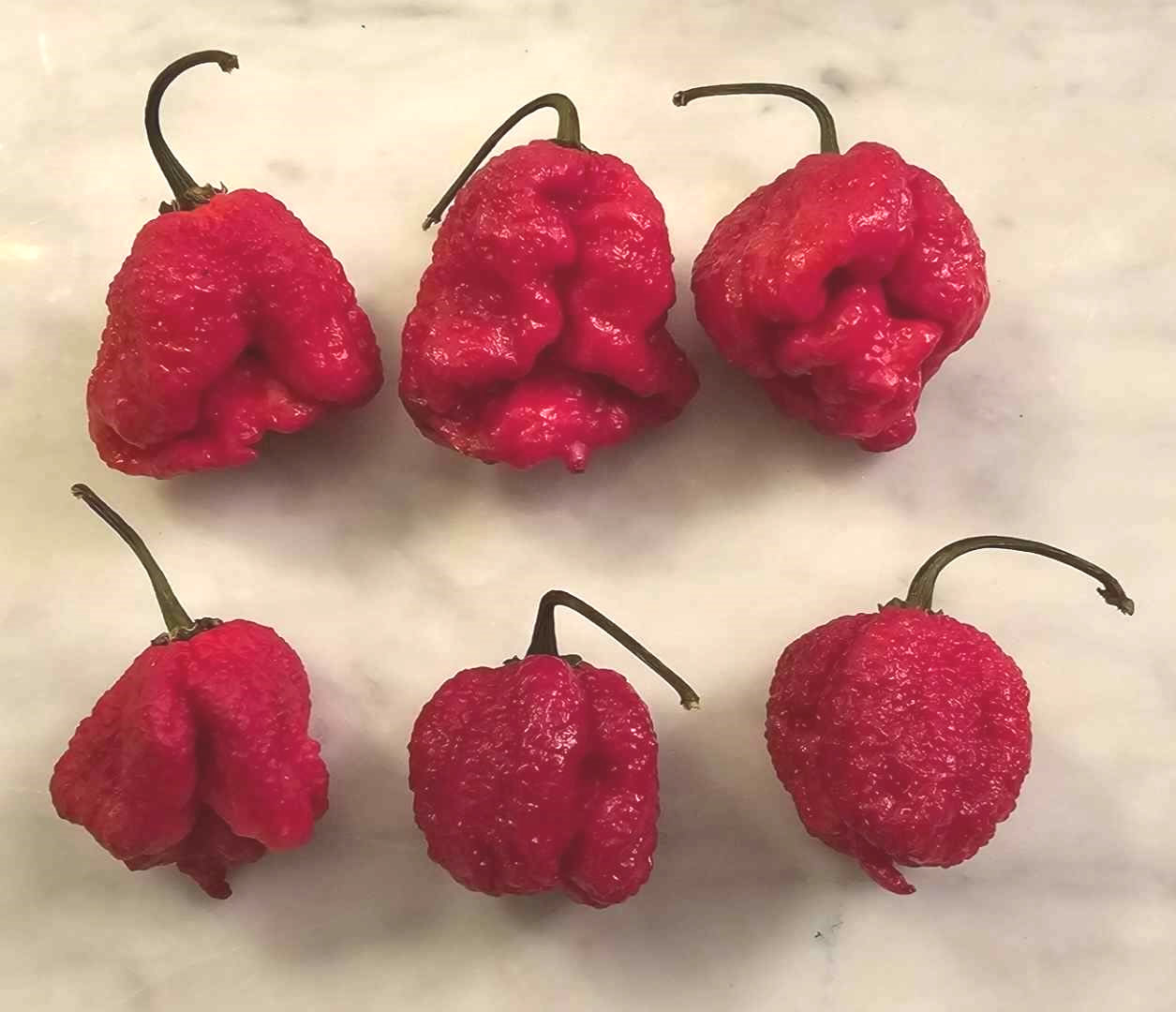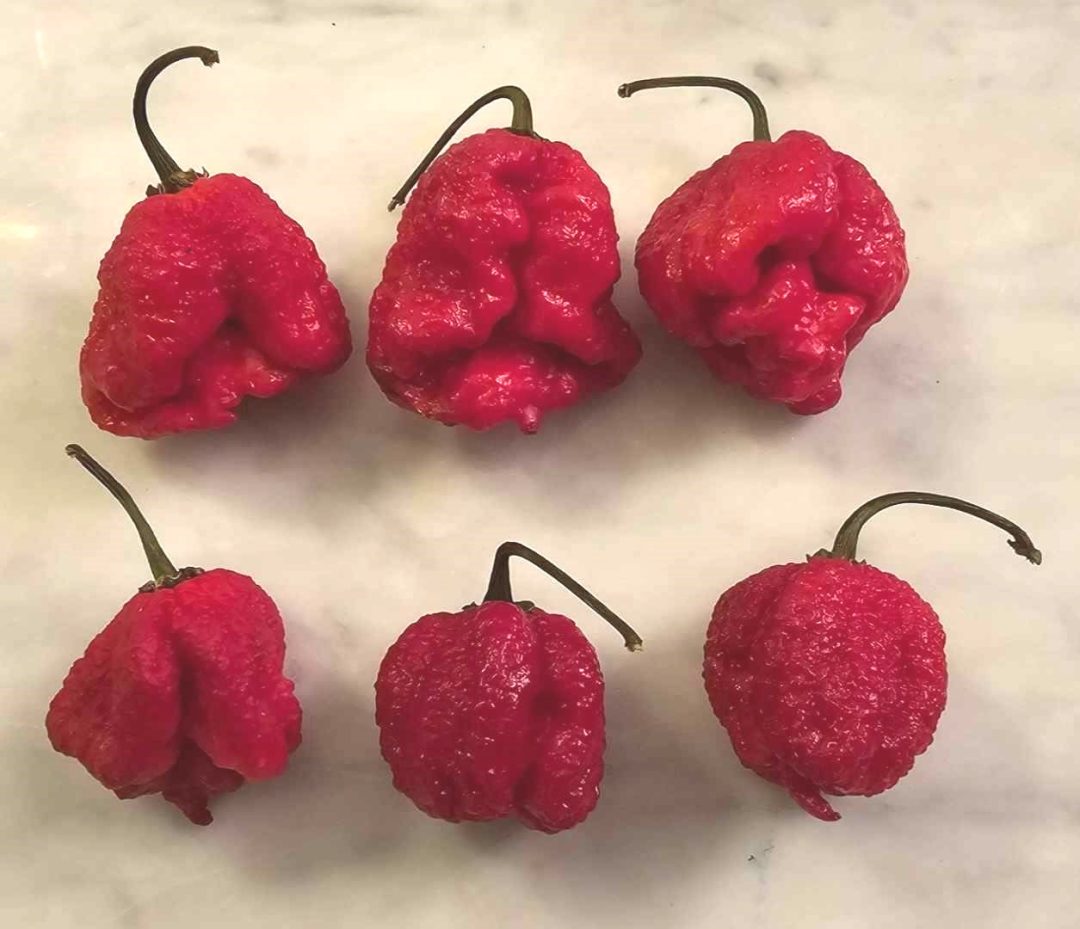
László Dickó and his wife Enikő
Did you hear the recent news about a new chilli pepper called The Rose of Shahina?
This exciting new variety was created by Hungarian chilli expert László Dickó, the founder of Chili Hungária. In 2023, László crossed two undisclosed pepper varieties to develop this unique pepper, which he then sent to the renowned UK Chilli Queen, Shahina. This gesture of friendship and admiration delighted Shahina, who was both surprised and thrilled by the thoughtful tribute. While the specifics of the parent peppers remain a secret, this new variety excites us here at the LOF, as we hope to feature the BRUTALLY hot Rose Of Shahina pepper to our contests in the future!
This got us thinking: if you’re curious about creating your own pepper variety, how does one go about growing and producing a new chilli pepper?
The Process of Crossbreeding Chilli Peppers
Creating a new pepper variety through crossbreeding is a detailed and rewarding process that involves careful selection, controlled pollination, and multiple generations to stabilise desirable traits. Here’s a breakdown of the general process:
Step 1: Selecting Parent Plants
The first step is to choose two parent plants with desirable traits. These might include factors such as heat level, flavour, size, shape, colour, or disease resistance. For example, a breeder might select a pepper known for its heat and another for its vibrant colour, hoping to combine these traits in the offspring. This selection sets the foundation for the characteristics of the resulting hybrid.

UK Chilli Queen holding a 7 Pot Primo
Step 2: Controlled Pollination
Once the parent plants are selected, the next step is hand-pollination to ensure a controlled cross. The breeder removes the anthers (the pollen-producing part) from one plant to prevent self-pollination, then transfers pollen from the other plant to the stigma (the pollen-receiving part). Timing is crucial, especially when varieties bloom at different times.
Step 3: Harvesting & Growing the First Generation (F1)
Once the cross-pollinated peppers mature, the breeder collects the seeds and plants them to grow the F1 generation. The offspring will often show a variety of characteristics, as the genetic material from both parent plants mixes. Some plants may display traits from one parent more strongly than the other.
Step 4: Selecting the Best F1 Plants
After harvesting the F1 generation, the breeder selects plants with the best traits, such as heat level, flavour, or shape. These selected plants are then used to create the next generation. This step is crucial for narrowing down the desired traits.

László sent Shahina 6 peppers and asked her to send seeds to growers she knows so grow F2 phenotypes
Step 5: Stabilising the Traits in F2 & Subsequent Generations

Rose Of Shahina
To stabilise the traits of the new pepper, the breeder uses “backcrossing,” where F1 plants are crossed with one of the original parent plants. After several generations (usually three to four), a stable variety emerges that consistently produces peppers with the desired traits. These stable varieties are labelled as F2, F3, and so on.
Step 6: Testing & Release
Once the new variety is stabilised, it undergoes testing for characteristics such as heat, flavour, and disease resistance. If the variety meets quality standards, it may be released to the market, sometimes after collaborations with agricultural institutions.
Conclusion
Crossbreeding chilli varieties is an exciting process that allows breeders to innovate and produce peppers with unique traits. It requires patience, precision, and a solid understanding of genetics, and often takes several generations to perfect a new variety. As breeders like László Dickó continue to push the boundaries of what’s possible, we can look forward to more exciting and flavourful chilli varieties in the future.
For more on pepper breeding and genetics, resources like the Journal of Agricultural Science, Plant Breeding, and Horticultural Science provide in-depth insights into these fascinating techniques.
You can learn more about László here at chilihungaria.hu.




